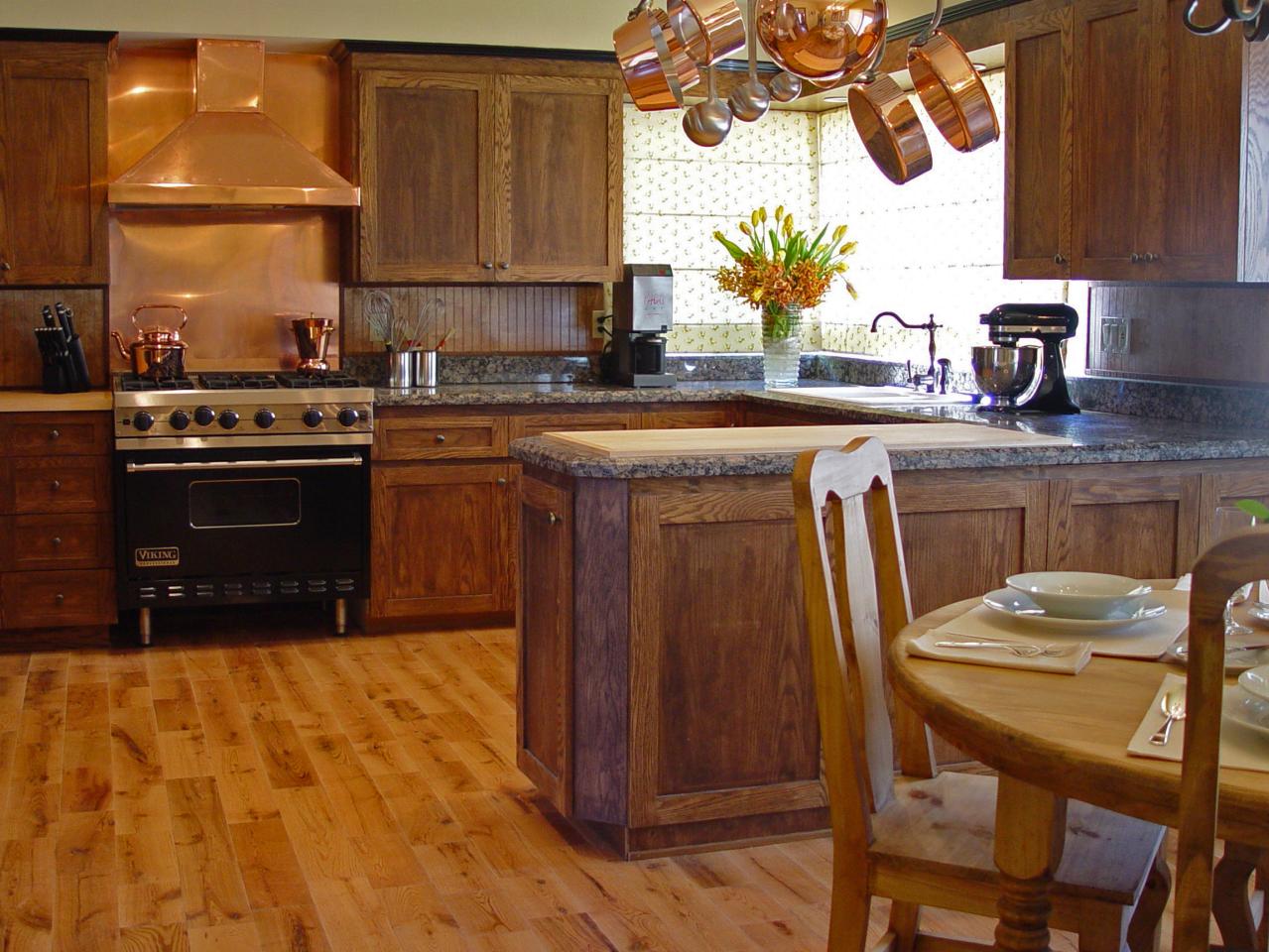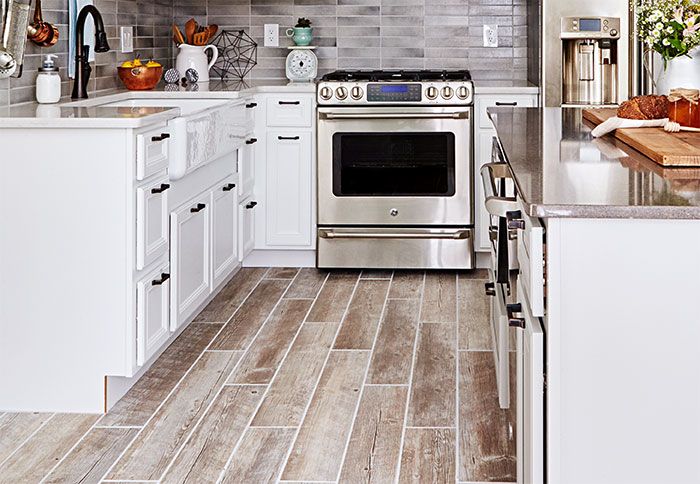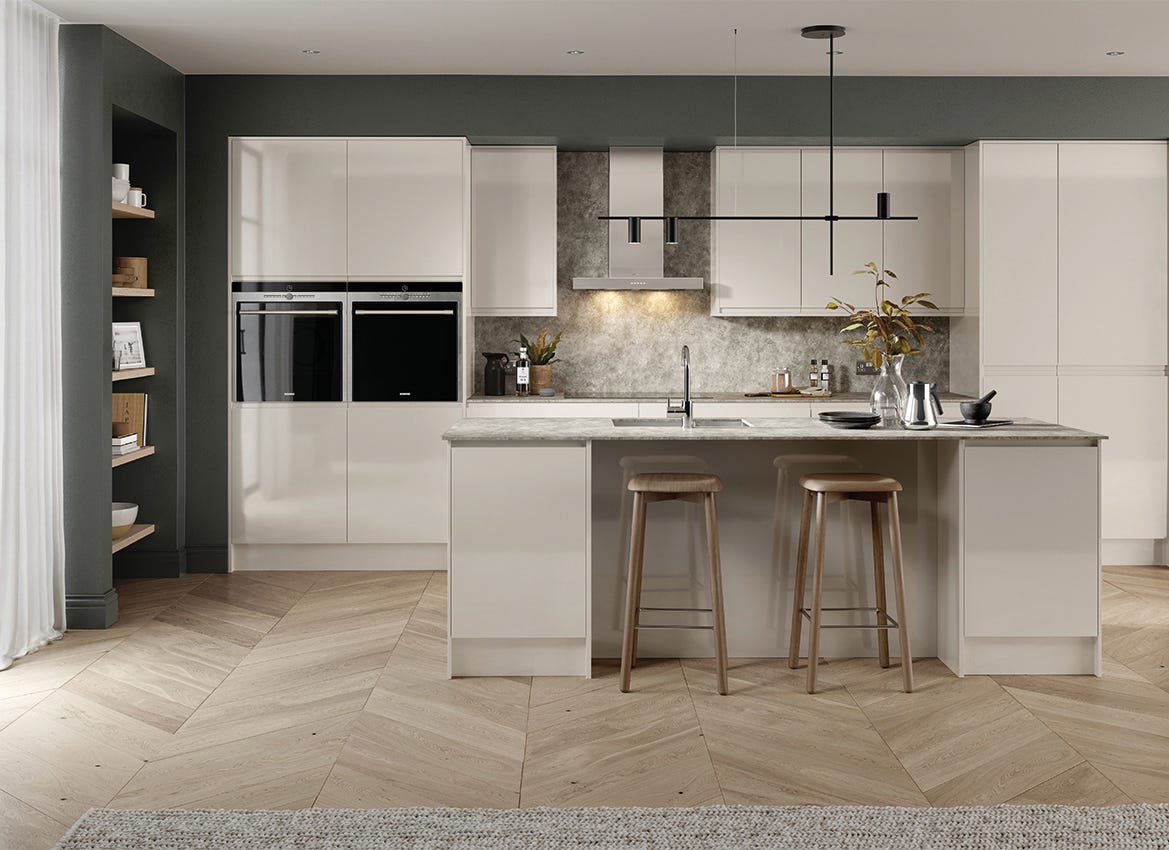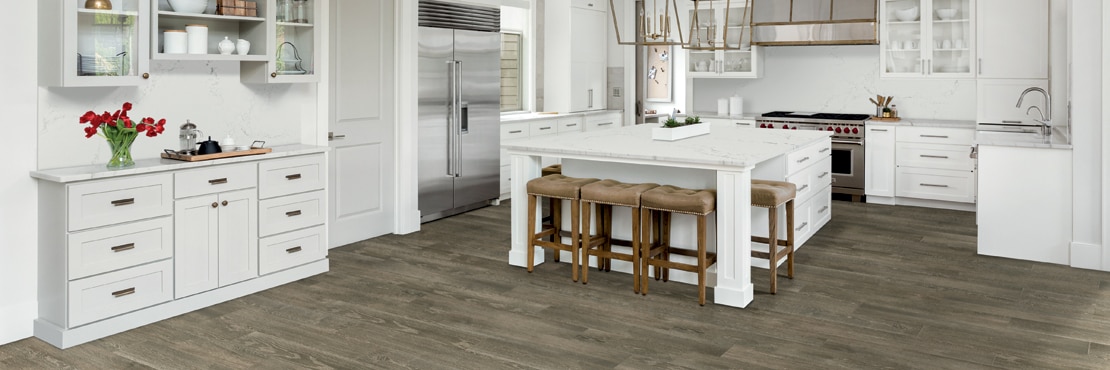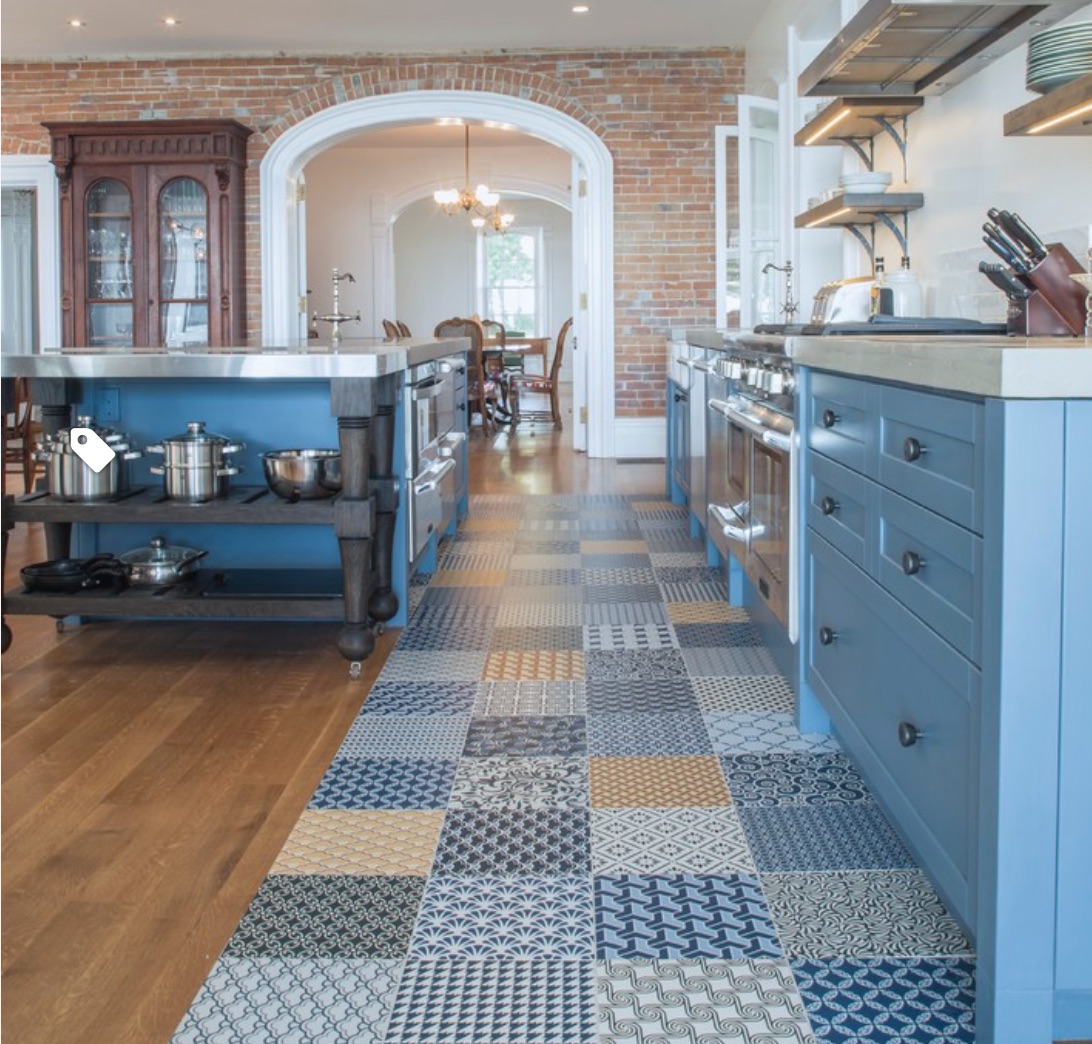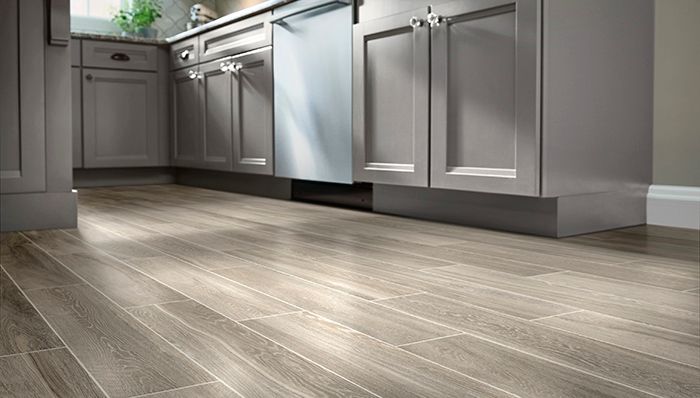Choosing the Right Wood Look Tile for Your Kitchen
Choosing the right wood look tile for your kitchen involves considering several factors to ensure it matches your aesthetic preferences and functional needs. Wood look tiles offer the beauty of wood with the durability of tile, making them a popular choice for kitchen flooring. Here’s how to select the perfect wood look tile for your space:
- Material Options: Wood look tiles are typically made from porcelain or ceramic. Porcelain is denser and more durable, making it a better choice for high-traffic areas like the kitchen. Ceramic tiles are generally more affordable and can be just as attractive, but they are slightly less durable than porcelain.
- Finish and Texture: Wood look tiles come in various finishes, from matte to glossy. Matte finishes offer a more natural, rustic look and are less slippery, making them ideal for kitchens. Textured tiles mimic the grain of real wood, adding depth and realism to the floor. Consider the finish and texture that best suits your kitchen’s style and functionality.
- Color Variations: These tiles come in a wide range of colors, from light oak and maple to dark walnut and ebony. Choose a color that complements your kitchen cabinets, countertops, and overall design scheme. Lighter colors can make a small kitchen feel larger, while darker hues add warmth and sophistication.
- Size and Plank Width: Wood look tiles are available in various sizes and plank widths. Longer and wider planks create a more contemporary look, while narrower planks can give a traditional feel. Consider the size of your kitchen and the look you want to achieve when selecting the tile size and plank width.
- Pattern and Layout: The pattern in which you lay your tiles can significantly impact the look of your kitchen. Common patterns include straight lay, diagonal, herringbone, and chevron. Each pattern offers a unique visual effect, so choose one that enhances your kitchen’s design and adds visual interest.
- Grout Color: The color of the grout can affect the overall appearance of your wood look tile floor. Matching grout colors blend seamlessly with the tiles, creating a cohesive look, while contrasting grout colors can highlight the tile pattern and add definition. Consider the effect you want to achieve when selecting your grout color.

Incorporating Different Wood Tile Patterns
Incorporating different wood tile patterns in your kitchen can elevate its design and add a unique character to the space. The pattern in which tiles are laid can transform the look and feel of your kitchen, making it more visually appealing and stylish. Here are some popular wood tile patterns to consider:
Herringbone Pattern: The herringbone pattern is a classic choice that adds a touch of elegance to any kitchen. This pattern is created by laying rectangular tiles in a zigzag formation, resembling the bones of a fish. It’s a versatile pattern that works well in both traditional and modern kitchens, creating a dynamic and eye-catching floor.
Chevron Pattern: Similar to herringbone, the chevron pattern features a zigzag design, but the tiles are cut at an angle to form a continuous V shape. This pattern creates a sense of movement and sophistication, making it a great choice for a statement floor in the kitchen. Chevron patterns work particularly well in larger kitchens where the design can be fully appreciated.
Straight Lay Pattern: The straight lay pattern is the most straightforward and commonly used tile layout. Tiles are laid in a simple, grid-like fashion, parallel to the walls. This pattern is easy to install and gives a clean, modern look. It’s perfect for showcasing the natural beauty and grain of the wood look tiles.
Diagonal Pattern: Laying tiles diagonally can make your kitchen appear larger and more spacious. This pattern involves placing tiles at a 45-degree angle to the walls, creating a diamond-like effect. Diagonal patterns add a unique twist to the traditional straight lay and can make narrow kitchens feel wider.
Random Width Pattern: Mixing tiles of different widths can create a rustic and eclectic look. This pattern involves using tiles of varying widths in a random arrangement, mimicking the look of reclaimed wood floors. It’s a great way to add character and a sense of history to your kitchen.
Basket Weave Pattern: The basket weave pattern is formed by laying pairs of rectangular tiles perpendicular to each other, creating a woven effect. This pattern adds texture and visual interest to your floor, making it an excellent choice for adding a touch of sophistication to your kitchen.
Combining Wood Look Tiles with Other Materials
Combining wood look tiles with other materials in your kitchen can create a harmonious and visually intriguing space. The blend of different textures and finishes adds depth and dimension, enhancing the overall design. Here are some ideas for effectively combining wood look tiles with other materials:
Wood Look Tiles and Natural Stone: Pairing wood look tiles with natural stone, such as marble or granite, creates a luxurious and elegant kitchen. Use wood look tiles for the floor and natural stone for countertops or backsplashes. This combination balances the warm, earthy feel of wood with the cool, sleek look of stone, resulting in a sophisticated aesthetic.
Wood Look Tiles and Ceramic Tiles: Combining wood look tiles with ceramic tiles allows for a mix of patterns and colors. Use wood look tiles for the floor and ceramic tiles for the backsplash or accent walls. This combination can create a vibrant and eclectic kitchen design, with the ceramic tiles adding pops of color and intricate patterns.
Wood Look Tiles and Metal Accents: Incorporating metal accents with wood look tiles can give your kitchen an industrial or modern edge. Use wood look tiles for the flooring and stainless steel or brushed nickel for fixtures, hardware, and appliances. The contrast between the warm wood tones and sleek metal finishes creates a striking and contemporary look.
Wood Look Tiles and Glass Elements: Adding glass elements to your kitchen design can enhance the light and airy feel of the space. Use wood look tiles for the floor and glass tiles for the backsplash. Glass cabinet doors or glass shelves can also complement the wood look tiles, creating a cohesive and stylish kitchen.
Wood Look Tiles and Concrete: For a modern, minimalist kitchen, combine wood look tiles with concrete. Use wood look tiles for the floor and concrete for countertops or walls. The combination of the natural wood appearance and the raw, industrial look of concrete creates a balanced and contemporary design.
Wood Look Tiles and Brick: Combining wood look tiles with exposed brick can create a rustic or industrial kitchen design. Use wood look tiles for the flooring and brick for an accent wall or backsplash. The brick adds texture and warmth, complementing the wood look tiles and creating a cozy, inviting space.
Maintaining Wood Look Tiles in the Kitchen
Maintaining wood look tiles in the kitchen is essential to keep them looking beautiful and prolong their lifespan. These tiles offer the aesthetic appeal of wood with the durability of tile, making them easier to care for than real wood. Here’s how to keep your wood look tiles in top condition:
Regular Cleaning: Regular cleaning is crucial to maintaining the appearance of your wood look tiles. Sweep or vacuum the floor daily to remove dirt and debris that can scratch the surface. Use a damp mop with a mild detergent to clean the tiles weekly. Avoid using abrasive cleaners or tools that can damage the tile finish.
Grout Maintenance: The grout lines between your wood look tiles can become dirty and discolored over time. Clean the grout regularly with a grout cleaner or a mixture of baking soda and water. Use a soft brush to scrub the grout lines gently. Sealing the grout annually can help prevent stains and make cleaning easier.
Spill Management: Spills are common in the kitchen, so it’s important to clean them up promptly to avoid staining the tiles. Wipe up spills immediately with a soft cloth or paper towel. For stubborn stains, use a mixture of water and vinegar or a specialized tile cleaner to remove the residue.
Preventing Scratches: Although wood look tiles are more durable than real wood, they can still get scratched. Place felt pads under furniture legs and avoid dragging heavy items across the floor. Use rugs or mats in high-traffic areas, such as in front of the sink or stove, to protect the tiles from wear and tear.
Dealing with Chips and Cracks: If a tile becomes chipped or cracked, it’s important to address the issue promptly to prevent further damage. Small chips can be filled with a color-matching epoxy or filler. For larger cracks or damaged tiles, it may be necessary to replace the affected tile. Keep extra tiles on hand from the original installation for this purpose.
Sealing and Protecting: Depending on the type of wood look tile you have, it may benefit from periodic sealing to protect the surface and enhance its appearance. Consult the manufacturer’s recommendations for your specific tiles. Sealing can help prevent stains and make cleaning easier.
Designing with Color and Texture in Wood Look Tiles
Designing with color and texture in wood look tiles can transform your kitchen into a visually stunning and unique space. Wood look tiles come in a variety of colors and textures, allowing for creative and personalized design options. Here’s how to effectively use color and texture in your wood look tile kitchen design:
Neutral Tones for a Classic Look: Neutral tones like beige, gray, and brown are timeless and versatile. These colors create a warm and inviting atmosphere, making them ideal for a classic kitchen design. Pair neutral wood look tiles with matching cabinetry and countertops for a cohesive and elegant look.
Bold Colors for a Modern Touch: For a more contemporary kitchen, consider wood look tiles in bold colors like dark ebony, rich mahogany, or even whitewashed finishes. These colors can make a strong statement and add a modern edge to your kitchen. Contrast bold tile colors with lighter cabinetry and walls to balance the look.
Texture for Added Depth: Texture plays a crucial role in the visual appeal of wood look tiles. Textured tiles mimic the grain and feel of real wood, adding depth and realism to the floor. Choose tiles with pronounced textures for a rustic or natural look, or opt for smoother finishes for a more refined appearance.
Mixed Colors and Patterns: Mixing different colors and patterns can create a dynamic and eclectic kitchen design. Use a combination of light and dark wood look tiles to create a patterned floor, or mix different tile sizes and shapes for a unique layout. This approach adds visual interest and can make your kitchen stand out.
Creating Focal Points: Use color and texture to create focal points in your kitchen. For example, a herringbone or chevron pattern in a contrasting color can serve as a striking focal point on the floor. Alternatively, use a different texture or color for the backsplash to draw attention to that area.
Complementing Your Overall Design: Ensure that the color and texture of your wood look tiles complement the overall design of your kitchen. Consider the style of your cabinets, countertops, and appliances when selecting tiles. A cohesive design will make your kitchen look well-thought-out and harmonious.
Kitchen Flooring Essentials
Pin on Great Room Beckley Hill
Kitchen Tile Flooring: Why Wood Look is Trending Daltile
Tile Wood-look Flooring Ideas
Kitchen flooring ideas: 22 stylish, practical kitchen floors
Best Kitchen Flooring – Kitchen Floor Ideas For Your Home
Kitchen Tile Flooring: Why Wood Look is Trending Daltile
The Six Best Floors for your Kitchen Renovation
Tile Wood-look Flooring Ideas
Wood Look Tile Ideas for Every Room in Your House
Related Posts:
- Solid Wood Flooring Unfinished
- Wood Floor Natural Cleaner
- Outdoor Wood Flooring Ideas
- Wood Flooring Ideas For Bedroom
- Wide Plank Natural Wood Flooring
- Engineered Wood Flooring Scratches
- White Wood Flooring For Bathrooms
- Wood Floor Tile Kitchen Ideas
- Wood Floor Joist Construction
- How To Install Wood Flooring In Kitchen



